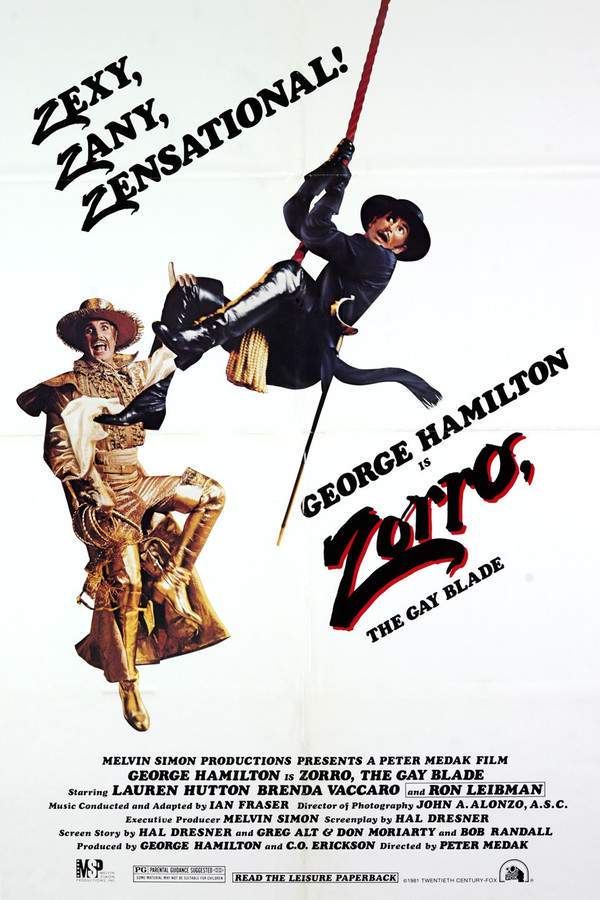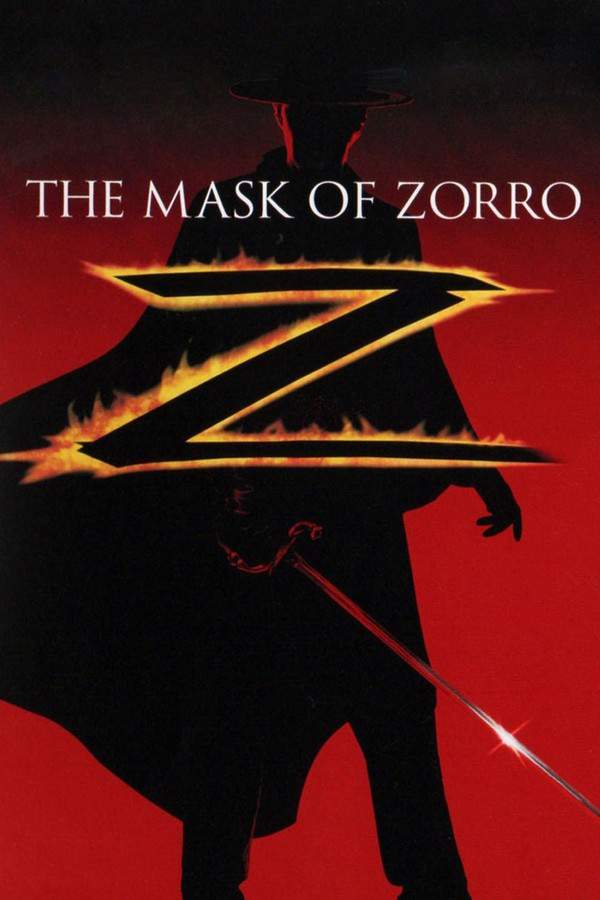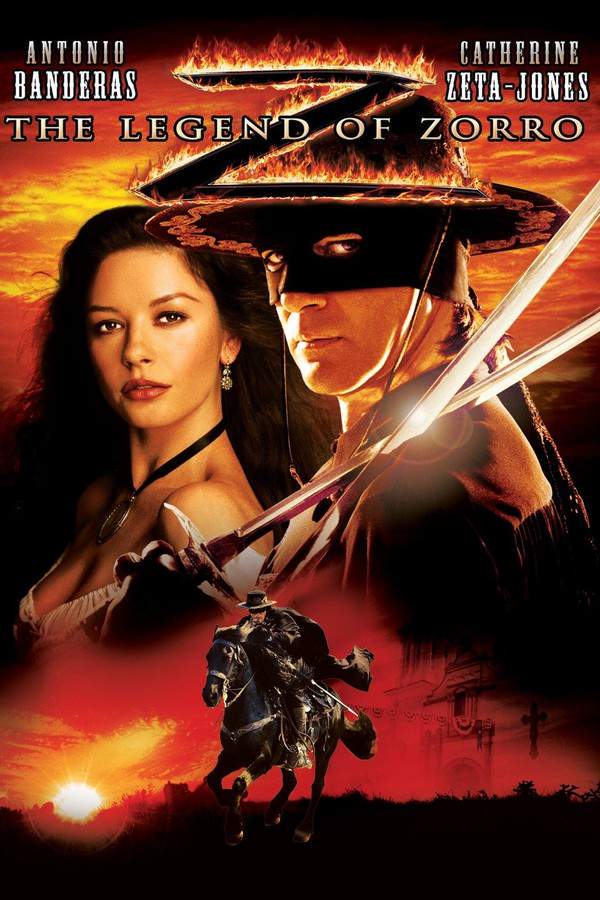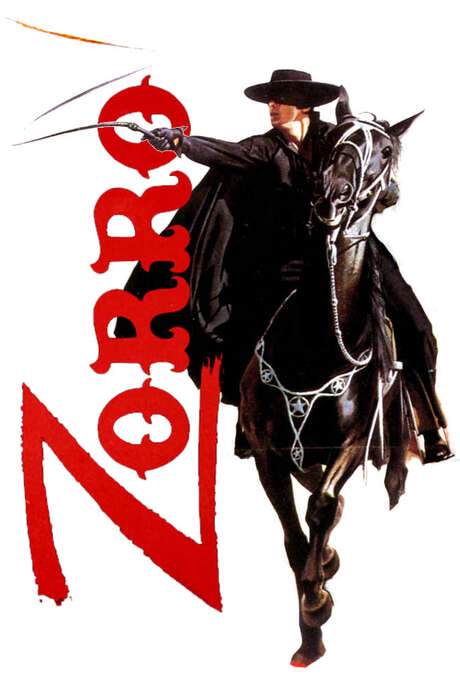
Zorro: The Gay Blade
Year: 1981
Runtime: 93 min
Language: English
Director: Peter Medak
In 1840s Mexico, a cruel governor’s tyranny is challenged by the masked hero Zorro. When Zorro sustains an injury, his twin brother Don Diego Vega, now Lieutenant Bunny Wigglesworth, steps in as the new masked avenger. Adopting the alias "The Gay Blade," Bunny brings a unique style and innovative approaches to fighting injustice. He also finds himself caught in a romantic entanglement with Charlotte, a passionate champion for change, while rallying support for a more equitable future.
Warning: spoilers below!
Haven’t seen Zorro: The Gay Blade yet? This summary contains major spoilers. Bookmark the page, watch the movie, and come back for the full breakdown. If you're ready, scroll on and relive the story!
Zorro: The Gay Blade (1981) – Full Plot Summary & Ending Explained
Read the complete plot breakdown of Zorro: The Gay Blade (1981), including all key story events, major twists, and the ending explained in detail. Discover what really happened—and what it all means.
Set in the indeterminate 1840s, the film opens in a lavish villa in Madrid, Spain, where we find Don Diego Vega (George Hamilton), the quintessential Spanish Don Juan, entangled in a romantic liaison with a gorgeous woman. However, she is not his spouse; instead, she belongs to someone else. Their clandestine affair takes a dangerous turn when her husband, Garcia, unexpectedly arrives, shattering their illusion of safety. Demonstrating considerable flair, Diego engages in a duel against Garcia and his five brothers, wielding swords with finesse. Meanwhile, Diego’s mute servant, Paco (Donovan Scott), communicates a letter from Diego’s father requesting his return to California, a region then under Mexican rule. The two escape by leaping from a high wall into a waiting carriage.
Weeks later, Diego and Paco land in the village of Los Angeles, greeted by Diego’s childhood friend Esteban (Ron Leibman), now the captain of the local guard. They soon uncover the tragic news of Diego’s father’s untimely death in a horse riding accident — startled by a turtle, of all things. Esteemed Esteban serves as the acting alcalde in the absence of Diego’s father, leading to a gathering of the dons, or landowners, to elect a new leader.
During this assembly, the dons introduce themselves with amusing mismatches of names and regions, such as Don Diego from San Fernando and Don Francisco from San Jose. Ultimately, Esteban is declared alcalde via a rigged vote and, in a rather comical scene, commences his inaugural address to the townsfolk. However, his speech is interrupted by Charlotte Taylor-Wilson (Lauren Hutton), a wealthy political activist from Boston. Sparks ignite between the two despite their opposing views, leading to Diego’s infatuation with Charlotte, who initially turns him down, perceiving him as arrogant.
At Diego’s villa, he learns he has inherited Zorro’s iconic black cape, hat, and sword, along with a revealing note from his late father stating that he was indeed Zorro, the esteemed hero of the people. Inspired, Diego resolves to don the timeless costume for the upcoming masked ball. On his way, he witnesses a peasant being robbed and valiantly defeats the bandit, reclaiming the stolen funds. He instructs the peasant to announce that ‘El Zorro’ has resurfaced.
During the ball, Diego dances with Florinda (Brenda Vaccaro) while outside, the excitement about Zorro’s return grows. Unfortunately, Velasquez (James Booth), the local tax collector, identifies Diego and informs Alcalde Esteban. This spurs a duel where Diego escapes, but not without injuring his foot, leading to a noticeable limp.
In the following days, as Esteban’s cruelty in pursuit of wealth escalates, Diego is sidelined by his injury. Luckily, his estranged twin brother Ramon (George Hamilton in a dual role) arrives from the British Royal Navy, sporting a flamboyant demeanor and an English accent, now calling himself Bunny Wigglesworth. With Diego recovering, Bunny reluctantly accepts the mantle of Zorro, demanding a revamped costume replete with flashier adornments and replacing Zorro’s traditional sword with a whip.
As Bunny takes to championing the peasants, navigating a relationship with Charlotte, Diego’s situation grows complicated. Esteban and the landowners become further incensed by Zorro’s antics and Bunny’s eccentricities. Florinda, eager to flaunt her lavish necklace, persuades Esteban to host another masquerade ball. To mislead Esteban, Diego sends fake invitations to all landowners, encouraging Zorro-like attire. At the masquerade, amidst the crowd of masked Zorros, Diego and Bunny plot to steal the necklace.
After a series of cunning schemes and thrilling escapades, ultimately, Diego attempts to reach out to Charlotte to confess his identity and present her with the stolen necklace, only to discover she already recognizes him as Zorro. However, a spy catches wind of her affections and informs the Alcalde, leading to her arrest and a death sentence.
In a gripping climax, disguised as a monk, Zorro negotiates his life for Charlotte’s, but just as he faces execution, Bunny makes a daring entrance in a dazzling Zorro outfit. Together, they orchestrate a rebellion, leading the peasant crowd to overthrow the Alcalde, leaving Florinda to abandon Esteban.
In the touching final moments, Bunny bids farewell to Diego and Charlotte, riding off to rejoin the Royal Navy, while Diego and Charlotte set off to discuss plans for their future, including their forthcoming wedding — a true tale of love, heroism, and the enduring legend of Zorro.
Last Updated: October 25, 2024 at 09:59
Unlock the Full Story of Zorro: The Gay Blade
Don't stop at just watching — explore Zorro: The Gay Blade in full detail. From the complete plot summary and scene-by-scene timeline to character breakdowns, thematic analysis, and a deep dive into the ending — every page helps you truly understand what Zorro: The Gay Blade is all about. Plus, discover what's next after the movie.
Zorro: The Gay Blade Timeline
Track the full timeline of Zorro: The Gay Blade with every major event arranged chronologically. Perfect for decoding non-linear storytelling, flashbacks, or parallel narratives with a clear scene-by-scene breakdown.

Characters, Settings & Themes in Zorro: The Gay Blade
Discover the characters, locations, and core themes that shape Zorro: The Gay Blade. Get insights into symbolic elements, setting significance, and deeper narrative meaning — ideal for thematic analysis and movie breakdowns.

Similar Movies to Zorro: The Gay Blade
Discover movies like Zorro: The Gay Blade that share similar genres, themes, and storytelling elements. Whether you’re drawn to the atmosphere, character arcs, or plot structure, these curated recommendations will help you explore more films you’ll love.
Explore More About Movie Zorro: The Gay Blade
Zorro: The Gay Blade (1981) Scene-by-Scene Movie Timeline
Zorro: The Gay Blade (1981) Movie Characters, Themes & Settings
Zorro: The Gay Blade (1981) Spoiler-Free Summary & Key Flow
Movies Like Zorro: The Gay Blade – Similar Titles You’ll Enjoy
The Mask of Zorro (1998) Story Summary & Characters
The Legend of Zorro (2005) Plot Summary & Ending Explained
Zorro the Fox (1968) Complete Plot Breakdown
The Erotic Adventures of Zorro (1972) Full Summary & Key Details
Zorro the Avenger (1962) Full Movie Breakdown
The Bold Caballero (1936) Plot Summary & Ending Explained
The Shadow of Zorro (1962) Story Summary & Characters
Zorro (1975) Full Movie Breakdown
The Mark of Zorro (1940) Plot Summary & Ending Explained
Zorro’s Fighting Legion (1939) Film Overview & Timeline
The Mark of Zorro (1974) Story Summary & Characters
Zorro, the Avenger (1959) Film Overview & Timeline
The Mark of Zorro (1920) Plot Summary & Ending Explained
Zorro, Rider of Vengeance (1971) Complete Plot Breakdown
The Mark of Zorro (1975) Movie Recap & Themes

















